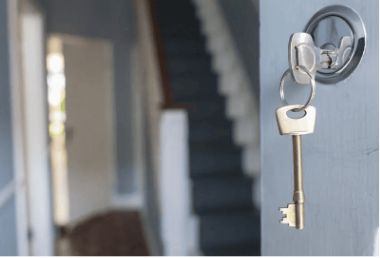Mortgage Recasting: What Is It?
Mortgage recasting entails paying off your loan in full and making smaller monthly payments until the remaining debt is paid off.Mortgage recasting not only results in a lower monthly payment, but it also saves money throughout the life of the loan, as opposed to mortgage refinancing, which changes the loan term or rate.
Assume you pay off a $400,000 mortgage in five years with a $100,000 lump amount, leaving $350,000 on the 30-year mortgage. The recasting process would include amortising the residual debt of $250,000 over the remaining 25 years of the loan
In this case, after the recast, the monthly payment would be decreased from $1,796 to $1,252 (assuming a 3.5% interest rate).
If your lender does not allow recasting, you may pay off your mortgage in full on your own. This will reduce your loan balance, but it will not affect your monthly payments. Nonetheless, if you go this route, you will be able to repay your loan sooner.
How Does Recasting a Mortgage Operate?

Take these actions to refinance your mortgage:
- To find out if you qualify, get in touch with your lender. It is crucial to verify the availability of mortgage recasting with your lender prior to allocating funds, as not all lenders provide this service. Furthermore, recasting is not an option for certain mortgage types, such as those sponsored by the Department of Veterans Affairs and the Federal Housing Administration. You can also find out if your mortgage is eligible from your lender.
- Set aside cash for a surprise expense. Apart from verifying whether your mortgage might be recast, ascertain whether your lender requires a minimum lump-sum payment. This sum is normally in the range of $5,000 to $10,000, but it can also be as much as 10% of your remaining mortgage balance. Before proceeding with the process, save money for your lump-sum payment based on the requirements set forth by your lender for the mortgage recast.
- Ask to get your loan recast.Send a formal request to your lender when you’re prepared to start the recasting procedure. Keep in mind that recasting can cost up to $500, depending on the lender.Compared to what you would pay to refinancing your house loan, that charge is far cheaper. Make your lump sum payment against the remaining balance of your mortgage after it has been approved.
- Keep up the payments. Your monthly loan payment will be reduced based on the residual balance after recasting your mortgage. Once your payment has been received, the recasting process may take several weeks to finish, so it’s crucial to keep up frequent payments in the interim. Start paying your newly computed mortgage as soon as you receive information that it was recast.
Loan Types That Are Recastable
Recasting your mortgage can be a great way to reduce your monthly payments while maintaining your existing interest rate, if you’re looking to do so. However, not every lender provides the service, and not every loan can be recast. For instance, FHA and VA loans cannot be recast, but conventional and jumbo mortgages can.
Loans Eligible for Recast
| Type Of Loan | Eligibility For Recast |
|---|---|
|
Conventional
|
Yes
|
|
High balance
|
Yes
|
|
Jumbo mortgages
|
Yes
|
|
FHA loans
|
No
|
|
VA loans
|
No
|
Points To Consider Prior To Recasting Your Mortgage

Recasting your mortgage may not be the greatest option for your particular financial situation, even if it is eligible and your lender offers the service. Before you recast, think about your:
- Financial circumstances. If you have a large amount of cash on hand, you may decide to refinance your mortgage. That being said, it’s wise to consider whether you’ll need the money for other large purchases.Examine whether you are no longer eligible for the popular mortgage refinancing option, which is an alternative to recasting, in light of any changes that may have occurred, such as a reduction in income.
- Authenticity. One of the main advantages of recasting a mortgage is a reduction in monthly mortgage payments.On the other side, you can be eligible for a reduced interest rate if your credit score has significantly increased since you obtained your mortgage. In this scenario, refinancing your mortgage will save you money in addition to extending the loan’s duration and lowering your monthly payment, saving you from having to recast.
- Interest rate as of right now. In a similar vein, if mortgage rates have dropped significantly since you first mortgaged your home, refinancing rather than recasting may make more sense.
Conversely, you may choose to consider refinancing your home if you:
- Not have the money to pay out in a large single sum. Refinancing your mortgage does not need you to make a substantial upfront payment towards the principle amount.However, bear in mind that if you refinance your mortgage, you will probably have to pay closing costs. Fortunately, they can frequently be placed onto your new mortgage rather than being paid up front.
- Desire a shorter loan duration. You’re not going to pay off the loan any faster when you recast, even when you’re paying a sizable payment on your mortgage.
- Might be able to get an interest rate reduction. Recasting a mortgage does not change the term of your loan or your interest rate. Instead, think about refinancing if your credit has improved or if mortgage rates have decreased since your mortgage was issued.
- Need money for additional large outlays. It might not be a good idea to tie up funds for future costs in a mortgage recast. As an alternative, think about refinancing your mortgage with a cash-out option, which will allow you to borrow more money.
How to Determine the Recast Payment on Your Mortgage

Once your debt has been paid down, you can use a mortgage recast calculator to calculate how much your new monthly principal and interest payment will be. The number of years left until the payoff date and your interest rate don’t change.
Let’s take an example where you have an initial amount of $400,000 with a 30-year term, 6% interest rate, and that balance. The monthly payment drops from $2,334 to $1,976 when a $50,000 payment is made ten years later.
Recall that a mortgage recast only modifies your interest and principal amounts. Recasting has no bearing on the distinct nature of your escrow payments.
Is It Time for You to Recast Your Mortgage?
When you can afford to make a sizable upfront payment in order to lower the monthly payment and interest charges over the course of a qualifying conventional or jumbo mortgage, recasting is a wise choice. If you are not eligible for a lower interest rate or don’t need to extend your repayment time, you can skip the closing and drawn-out underwriting procedure associated with a mortgage refinance.
Recasting a mortgage is starting to make more sense than refinancing, particularly when rates are now close to 20-year highs. Your current mortgage rate, which may be several points less than current mortgage refinance rates, is what you get to keep. You can increase your financial flexibility for the remainder of the payback period by lowering your monthly payment.
If you are able to make your current monthly payment but find it difficult to meet the lender’s minimal recast decrease, you might want to think about paying off your mortgage early by making additional payments when you can. By using this repayment plan, you can pay off your mortgage several years sooner and possibly save more interest than you would if you were to recast as you increase your regular payments.
Frequently Asked Questions (FAQs)
How many times may a mortgage be recast?
As long as you can meet the conditions for principle reduction and make on-time monthly payments, the majority of lenders won’t place a cap on the number of times you can request a mortgage recast.
What is the price of recasting a mortgage?
Mortgage recast fees can range up to $500, however most lenders only charge $250 or less.
Which is preferable, recasting or paying down the principal?
Paying down the debt involves less money up front than recasting, and you can make additional monthly payments even though your minimum payment stays greater. Recasting is preferable if you wish to have less continuing repayments but have a substantial cash reserve or financial windfall. When comparing the overall cost of interest, extra regular payments can save more money than recasting a mortgage.
Is it wise to refinance a mortgage?
If you can afford a significant principal decrease up front and need to lower your monthly payment, a mortgage recast is a viable choice. You keep your current interest rate, which may be far lower than current mortgage refinance rates, and this alternative is less costly and time-consuming than refinancing.






Leave a Reply